3DWarehouse

Bmw m3 E36(320i)
by 3DWarehouse
Last crawled date: 10 months, 2 weeks ago
The E36 M3 debuted in February 1992 and was in the dealer's showrooms in November that year; it was the first M3 powered by a straight-6 engine. The engine used is a 2,990 cc (182 cu in) S50, which produces 210 kW (282 hp). Initially available as a coupe only, BMW introduced M3 convertible and saloon versions in 1994, the absence of any M5 models in the BMW line-up between the end of E34 M5 production in 1995 and the launch of the E39 M5 in 1998 prompted the introduction of the 4-door Motorsport model. Also in 1994, BMW produced the limited-edition M3 GT as a racing homologation special; all GTs were British Racing Green and featured an upgraded 295 PS (217 kW; 291 hp) 3.0-litre engine. 356 GTs were built.7] In September and November 1995, the M3 coupe and saloon, respectively, were upgraded to the 236 kilowatts (316 hp) 3.2 litre S50B32 engine. At the same time, the cars received clear indicator lenses, new wheels and a 6-speed gearbox. The convertible did not receive these changes until February 1996.8] The majority of E36 M3s were produced at the Regensburg factory; however, a small number of low compression right hand drive M3s were assembled at BMW's Rosslyn plant in Pretoria, South Africa.9] In total, 46,525 coupe, 12,114 convertibles and 12,603 saloons were produced. The saloon ceased production in December 1997, the coupe ceased production in late 1998, and the convertible ceased production in December 1999.7] The E36 chassis M3 was touted as one of the best handling cars of the 1990s in independent tests by Car & Driver. Known for its benign handling and balance, the car is popular amongst circuit racers and track enthusiasts. The E36 was also one of the first cars BMW designed mainly with computer aid with the use of detailed Finite Element Analysis and other software. §North American modelsedit] The first E36 M3 to be imported to the United States was the 1995 model, which used the S50B30US engine with 240 bhp (179 kW; 243 PS) and 305 N·m (225 lb·ft), a different suspension setup and a 0-60 mph (97 km/h) time in about six seconds. It was available with five-speed manual and automatic transmissions. An M3 Lightweight, with the characteristic checkered flag motif on the bonnet and wing corner A LTW (Lightweight) M3 was produced in limited numbers for the 1995 model year. The 1996–1999 model years had displacement bumped up to 3.2 litres, still with 240 bhp (179 kW; 243 PS), but torque increases to 320 N·m (240 lb·ft) which is the same S52B32US engine used in the early M Roadster and M Coupe. The manual gearbox remains a 5-speed despite the European versions being upgraded to 6-speed. It was also available as a saloon starting in model year 1997, and as convertible in 1998. Production of the saloon was halted in 1998, while the other models continued until 1999. US sales figures include a total of 18,961 coupes, 7,760 saloons and 6,211 convertibles.10] Other notable differences between North American and their European counterparts were as follows: Floating rotors were standard on the Canadian and European cars, but absent from the American variations. As well, the differential and rear axles on the North American cars were of lighter duty builds than the Euro cars. All late model M3's received subframe re-inforcements and more aggressive front end suspension geometry due to the differences in caster and camber yielded by top hat design and lower control arm bushings. §Racing historyedit] Team GotOrgans E36 M3 in the Yukon, Canada, while on the Alcan Winter Rally In 2012, an E36 M3 driven by Daniel Merkins and Ryan Smiley of Team GotOrgans?11] competed in the Alcan 5000 Winter Rally,12] a rally starting in Seattle to the Arctic Circle and back, marking the first time that an M3 had competed in this gruelling motorsport event. The M3 was an unprecedented vehicle choice for this rally,13] however, it proved to be one of the most reliable cars competing that year, never citing a breakdown or hard start in the cold, as well as never becoming snowbound. E36 special models There were six special-edition models of the E36 M3 produced: the M3 Euro-Spec (Canadian Edition), M3 LTW, M3 GT, M3 GT-R, M3-R, and the Imola Individual (often referred to as the GT2) (the last of the E36s) There was also an M3 Anniversary Edition only produced in 1999 for Australia. This was the final year of production for the E36, with only 50 coupes and 70 convertibles being made. Furthermore, 'BMW Individual' were able to custom design an M3 with specific coloured leather, woodgrain and other personalized options including polished magnesium alloy wheels from the Anniversary edition. Convertibles lacked the sports seats found in the coupe but retained every other feature. M3 Euro-Spec (Canadian Edition In 1994 agreements existed between Canada and several countries in Europe which allowed any car authorized in one participating country to legally be sold in any of the others.citation needed] Though BMW had unveiled the next generation E36 M3 in Europe in 1992, the company felt that the production version would need to be priced much higher for export to North America than the market would allow. While the engineers worked on a less expensive North American version of the E36 M3, BMW Canada seized the window of opportunity: 45 numbered European specification M3 coupes were specially produced and imported into Canada. Even with a base price of $59,900 (a substantial sum for the day given that the standard equipment list did not include forged lightweight wheels, air conditioning, a sunroof or even metallic paint), all 45 cars were spoken for in 3 days. Unlike the other special versions of the E36 M3, buyers were free to choose any colours and options they wanted on their cars. The cars all came equipped with the 286 PS (210 kW; 282 hp) 3.0 L inline 6-cylinder engine, vented brakes with floating rotors, glass headlights and other European standard equipment. They were initially delivered to Toronto, then shipped all across the country to the dealerships where they were ordered. Canada would not see another E36 M3 for sale until two years later, when BMW finally made the American versions of the 1997 M3 available for sale. Forty five Euro-Spec Canadian Edition cars were built, each one having a numbered engraved plaque in both the glovebox and the custom leather case which holds the owners manuals. Only the Australian M3-R was built in lower numbers. M3 Lightweight (LTW) (E36) Beginning with the first E36 M3s delivered, BMW racers began pressuring BMW for a homologation version with which to compete against Porsche 911s in sports-car racing. A homologation version is a car with special modifications from the factory that are allowed in racing as 'production' cars, if enough cars are made and sold. In 1995, BMW relented and offered the M3 LTW. The major changes to the car were to lower the weight for racing. The cars came without a radio (although the speakers were installed and the car pre-wired for the radio), air conditioning, leather seats, tool kit, or a sun roof. The doors have aluminum skins. There is no underhood insulation blanket and the trunk only has carpet on the floor. The under body insulation is thinner and there is special carpeting to lower weight. Overall the changes added up to 200 lb (91 kg) less than a standard M3. The engines were specially selected from the assembly line for the highest power. The ECU had the top speed limiter removed. The cars also came with a 3.23 rear axle ratio versus the standard 3.15 of the 1995 M3s. The cars were fitted with a sport suspension with stiffer springs and shocks. Cosmetically the M3 LTW came only in Alpine White with the Motorsports flag decals on the left front and right rear corners of the car. There is an aggressive wing on the trunk lid. There was some carbon fiber interior trim and the badges (side molding and dash) say 'BMW Motorsports International.' The seat fabric is black with a red pattern. Upon completion they were sent to Prototype Technology Group (PTG) Racing in Virginia for final preparation, which included the front and rear Motorsport flag decals, and 'trunk kit.' In the trunk there was a different oil pan with special oil pump with dual pickups as used on the European M3 and later on the E46 M3, longer oil dipstick tube, front strut bar, lower x brace, spacer blocks to raise the rear wing, and an adjustable front splitter. Each new owner was given a 1 page legal document to sign stating that any installation of trunk items voided the new car warranty. Unique forged 17-inch alloy wheels, 7 1⁄2 inches wide in the front and 8 1⁄2inches wide in the rear, mounted with identically sized 235/40-17 tyres front and rear were an additional difference from the standard 17 × 7 1⁄2-inch cast alloy wheels mounted with 235/40-17 tyres on standard M3s.14] Although BMW promised to build approximately 100, BMW never released the number of M3 LTWs built, and because of the peculiar assembly line, to this day may not be known. However, enthusiasts now believe that there exist approximately 125 built, with some 116 sold to the public. The first two cars, which were used as press cars, are not technically M3 LTWs as they were regular production M3s that PTG made similar in appearance to the not-yet-built LTW. After press duties, those two cars were brought back into the PTG stable. Racing history Outside of multiple cars raced in the BMW CCA Club Racing series (an amateur series specific only to BMW models) PTG had between two to four models, three of which they turned over to Genesis Racing to campaign in the Professional Sportscar's Endurance Series formerly the International Motor Sports Association IMSA]Firehawk Series], while they (PTG)focused on the development of the GT series cars. The lead car, driven by Rick Fairbanks and Nick Ham had several podium finishes in its inaugural season while the other two cars had a variety of drivers that had varying degrees of success. One of the original three Genesis cars was severely damaged during the Sears Point race in 1995 while being driven by John Paul Jr. It seems that one of the PTG cars was sold to Jeff McMillian, in which he won the SCCA World Challenge series, without winning a single race. One was raced in the SCCA's Touring 1 class by John Browne. The now defunct team Massari Muller won the 1998 Motorola Cup 'Grand Sport class' championship with drivers Terry Borcheller and Andy Pilgrim in an M3 M3 GT 1995 BMW M3 GT Individual The M3 GT coupe was a limited-edition mainland Europe-only edition of which 356 were made; 50 were made in right-hand drive for the UK market and were built in 1995 February–June. Six prototypes were made in December 1994. Famous for being British Racing Green (#312) with a Mexico Green interior – a peculiar choice when the traditional German national racing colour is silver.clarification needed] The BMW M3 GT was a homologation series special built to allow the E36 M3 to compete in the FIA-GT class II, IMSA GT and international long-distance races. It differed from the standard M3 with a deeper, adjustable front splitter, higher rear double wing, doors in aluminium. Forged BMW Motorsport wheels, 17x7,5 in front and 17x8,5 in rear, stiffer suspension in front, x-brace and strut brace. Engine had raised compression (10,8:1), slightly changed intake and camshafts (264 deg duration), motorsport oil pump and double oil pickups in the special oil pan as well as special software for engine and VANOS, producing 295 bhp at 7100 rpm and 323 Nm at 3900 rpm. The M3 GT was around 30 kg lighter than the standard M3 and had a derestricted top speed of 275 kmh. M3 Evolution Imola Individual (M3 GT2 The M3 Evolution Imola Individual was a limited-edition (200 units for Europe with part VIN WBACB5103-AN307--, 50 for the United Kingdom) car sometimes referred to as the M3 GT2. The engine and performance characteristics of the car were unchanged from the 1996+ euro M3, and a special exterior and interior colour combination was once again chosen by BMW; Imola red (405) paint with Nappa leather & Amaretto seats in Imola red and anthracite seats. It also included side airbags, the M3 GT Class II rear spoiler, front class II corner spoiler extensions, electric seats, and double-spoke polished alloy wheels. Prior to the release of the Imola Individual there was a pre-production model made which was used as the basis of the special edition, it featured the Class II front and rear spoilers, special order Imola red Paint, special order Nappa + Anthracite Amaretta interior, SMG gearbox, GSM Phone Kit, headlamp washers and double-spoke polished alloy wheels. This car is believed to be the car BMW used for the Imola individual advertising, though not officially confirmed. The car was professionally converted to a 6-speed manual in June 2010 when the SMG Gearbox failed. 1998 BMW M3 Evolution Imola Individual number 42/50 Shown here M3-R Fifteen M3s were ordered by BMW Australia in 1994 to race in the Australian Super Production series. All were delivered to Tony Longhurst Racing for final preparation by the Frank Gardner run team. Eleven were made available to the general public, (who have to possess a CAMS license to be allowed to buy one), four were retained for the race series, the M3-R had locally sourced King springs fitted to Group N adjustable struts and rear perches, AP Racing twin plate clutch and four piston brake calipers, dual pickup sump, an oil restrictor in the head, A C Schnitzer cams, a 3.25:1 ratio medium case diff and M5 driveshaft, cold air snorkel into air filter box replacing left hand fog light, non functional rear seat, air conditioner delete and more aggressive tune, GT front splitter and rear spoiler with extensions and gurney strips. This was the most powerful production E36 made with 240 kW (326 PS; 322 hp). A bolt-in FIA approved roll cage was also a factory option (locally produced by Dencar) there were several differences between the cars depending on customer requirements, early numbers had non-staggered BBS wheels, later had staggered BBS wheels (individually numbered plaque fitted to centre console below emergency brake lever) M3 GTR The E36 M3 GTR is the road-going version of the competition machine built to compete in the 1994 ADAC German GT Cup Touring Car series. Essentially a race car with license plates. M3 compact To celebrate the 50th birthday of the German automobile magazine Auto Motor und Sport in 1996, BMW M GmbH hand-built (at least) one official BMW E36 M3 compact. The car was tested and described in the June edition of the magazine. The car embodied all the mechanical (engine, driveline, suspension) and visual (bumpers, wheels, mirrors, dashboard) characteristics of the stock E36 M3. It was powered by the 321 DIN-hp 3.2-litre engine, and its colour was red with a black cloth/alcantara interior. It had the forged Styling 24M 5-doublespoke wheels that came standard on the M3 cabriolet, an exhaust with fairly centered quad exhaust tip, Recaro sports bucket seats, red four-point seat belts and an alcantara wrapped steering wheel and gear lever. #1M #BMW #Coupe #E36 #M1 #M3 #M5 #M6 #X3 #X5 #X5M #X6 #X6M #Z3 #Z3M #Z4 #Z4M #Z8 #Z8M
Similar models
3dwarehouse
free

BMW E36 M3 coupe
...e original 3 series and the wheels and components #bmw #coupe #drag #german #m3 #m5 #m6 #power #rally #saloon #track_tuner #turbo
3d_export
$139

BMW M3 E36 3D Model
...bmw m3 e36 3d model
3dexport
bmw m3 e36 car coupe sport gt
bmw m3 e36 3d model kirographics 36818 3dexport
3dwarehouse
free

BMW E36 M3 saloon
...thanks to ilke for the original 3 series and the wheels. #bmw #drag #german #m3 #m5 #m6 #power #rally #saloon #track_tuner #turbo
3dwarehouse
free

BMW 325i Motorsport E36
...ji green #bmw #sports #compact #sedan #rwd #e36 #e30 #e46 #e34 #e39 #m3 #m5 #series #individual #m50b25 #m52b28 #msport #c200 #a4
3dwarehouse
free

BMW E36 Touring with engine and interior
...r
3dwarehouse
detailed bmw e36 touring with m54b30 engine, interior, m front bumper, m rear bumper, m side skirts and m3 mirrors
cg_trader
$12

BMW M3 GTS
...presented had a 2.3 l inline car sport vehicle transport wheel racing racing sport car racing sport car truck car wheel car wheel
3dwarehouse
free

BMW M3 E36 Coupe
... m3 e36 coupe
3dwarehouse
bmw m3 e36 coupe #1m #bmw #coupe #e36 #m1 #m3 #m5 #m6 #x3 #x5 #x5m #x6 #x6m #z3 #z3m #z4 #z4m #z8 #z8m
3dwarehouse
free

Progress- 1998 BMW 3-Series Coupe (E36)
...progress- 1998 bmw 3-series coupe (e36)
3dwarehouse
almost done! #3_series #bmw #car #coupe #dilbert
3dwarehouse
free

BMW M3 E36 Tuning
...bmw m3 e36 tuning
3dwarehouse
bmw m3 e36 tuning #1m #bmw #coupe #e36 #m1 #m3 #m5 #m6 #tuning #x3 #x5 #x5m #x6 #x6m #z3 #z4
cg_studio
$119
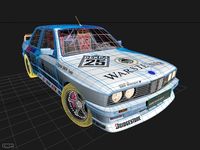
BMW e30 M33d model
...ny spoiler muscle ">car
.max .obj - bmw e30 m3 3d model, royalty free license available, instant download after purchase.
320I
3d_export
$100

2006 BMW 3 Series Touring 3D Model
...bmw 3 series touring 3d model 3dexport bmw e91 320i 325i 330d wagon estate german sedan car 3dken kenny...
3d_export
$99
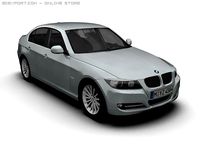
2008 BMW 3 Series 3D Model
...2008 bmw 3 series 3d model 3dexport bmw 320i 325i 335i series 3series 5series 7series e90 german luxury...
cg_studio
$95

2008 BMW 3 Series3d model
...bmw 3 series3d model cgstudio cars luxury sedan bmw 320i 325i 335i series 3series 5series 7series e90 german car...
3d_ocean
$89
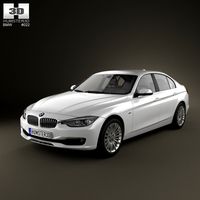
BMW 3 series Sedan 2012
...3 series sedan 2012 3docean 3 series 3-series 318i 320i 325i 330i 4 door bmw bmw 3-series city f...
3d_ocean
$89

BMW 3 series Touring
...bmw 3 series touring 3docean 3-series 318d 320d 320i 335i bmw bmw series bmw-3 bmw3 e90 e91 family...
3d_ocean
$89

BMW 3 series Coupe 2011
...bmw 3 series coupe 2011 3docean 3 series 3-series 320i 323i 325i 335is bmw bmw 3 series coupe e...
3d_ocean
$89
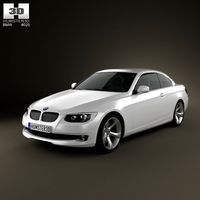
BMW 3 series Convertible 2011
...bmw 3 series convertible 2011 3docean 3 series 3-series 320i 323i 325i 335is bmw bmw 3 series cabrio convertible...
thingiverse
free

Fog light Frame/ Nebelscheinwerfer for BMW E30 320is by Exotechd
...fog light frame/ nebelscheinwerfer for bmw e30 320is by exotechd
thingiverse
nebelscheinwerfer 320is
unity_asset_store
$5

Arcade Cars: 320i & 850i
...rs: 320i & 850i asset from zuhian teiyu creative studio. find this & other land options on the unity asset store.
animium
free
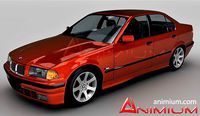
BMW 320i 3d model
...nline renders in 3ds max. accurately scaled 3d model, good for closeup renders.3d formats included: 3ds max, maya, obj, lightwave
E36
3ddd
$1
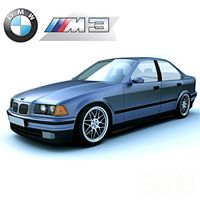
BMW m3 e36
...bmw m3 e36
3ddd
машина
автомобиль bmw m3 e36. присутствует салон.
регулировка сглаживания.
polys: 224 089
verts: 250 460
3d_export
$139

BMW M3 E36 3D Model
...bmw m3 e36 3d model
3dexport
bmw m3 e36 car coupe sport gt
bmw m3 e36 3d model kirographics 36818 3dexport
3d_export
$95

BMW e36 compact 3D Model
...t
bmw e36 sport coupe compact fast rally stock hd car germany 1996 1997 speed
bmw e36 compact 3d model artur92_art 85367 3dexport
3d_export
$95

BMW e36 compact tuning 3D Model
...tock hd car germany 1996 1997 speed tuning racing drag exclusive super
bmw e36 compact tuning 3d model artur92_art 87254 3dexport
3d_export
$79
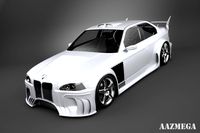
BMW E36 Shark tuning 3D Model
...age speed vray v-ray photoreal photorealistic render aazmega 3d model concept
bmw e36 shark tuning 3d model mega3d 56316 3dexport
3d_export
$75
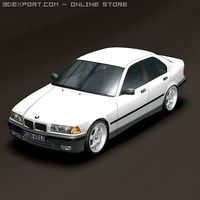
BMW Serie 3 E36 Rigged 3D Model
...es sport power german european low poly high detailed vehicle textured rigged
bmw serie 3 e36 rigged 3d model sn3d 17336 3dexport
cg_studio
$99

BMW M3 e36 1992-19993d model
...
.3ds .c4d .fbx .lwo .max .obj - bmw m3 e36 1992-1999 3d model, royalty free license available, instant download after purchase.
cg_studio
$49

BMW Serie 3 E36 *Rigged*3d model
...ged*3d model
cgstudio
.max - bmw serie 3 e36 *rigged* 3d model, royalty free license available, instant download after purchase.
3d_ocean
$89

BMW 3 Series (E36) compact 1994
...y, in real units of measurement, qualitatively and maximally close to the original. model formats: - *.max (3ds max 2008 scanl...
3d_ocean
$89

BMW Z3 coupe (E36/8) 1999
...y, in real units of measurement, qualitatively and maximally close to the original. model formats: - *.max (3ds max 2008 scanl...
Bmw
3ddd
$1
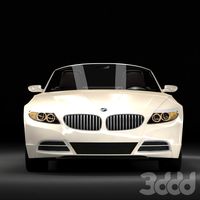
BMW
...bmw
3ddd
bmw , машина
высокополигональная модель bmw z4
3ddd
$1
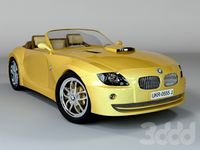
BMW
...bmw
3ddd
bmw
авто бмв
3ddd
$1

bmw
...bmw
3ddd
bmw
3d max 2009,vray 1.5 sp2.fbx
3ddd
$1
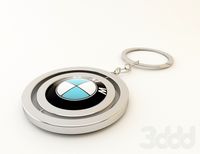
Брелок BMW
...брелок bmw
3ddd
брелок , bmw
брелок bmw
3ddd
$1

Диск BMW
...диск bmw
3ddd
bmw , диск
литой диск bmw
3d_ocean
$39

BMW M3
...bmw m3
3docean
3d model bmw m3 car
bmw m3
3ddd
$1
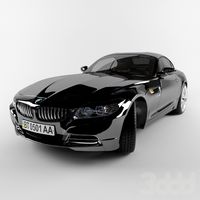
BMW z4
...bmw z4
3ddd
bmw
средне-детализированный bmw z4 coupe.
342500 полигонов
3d_ocean
$49
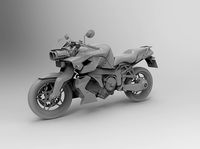
BMW K1300R
...bmw k1300r
3docean
bike bmw k1300r motorcycle vehicle
3d model of bmw k1300 bike.
3d_ocean
$60
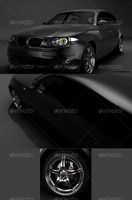
bmw
...bmw
3docean
bmw1 high poly model interior
high poly model of a series 1 bmw with interior and render scene
3ddd
$1

Руль BMW
...руль bmw
3ddd
руль
руль автомобиля bmw.
M3
3d_ocean
$39

BMW M3
...bmw m3
3docean
3d model bmw m3 car
bmw m3
3d_export
$5

m3 e92 coupe
...m3 e92 coupe
3dexport
cars m3 e92 coupe
turbosquid
$7

Spaceship M3
... free 3d model spaceship m3 for download as jpg, max, and obj on turbosquid: 3d models for games, architecture, videos. (1375862)
3ddd
$1

BMW M3
...ель автомобиля bmw m3 e30, выполненная по оригинальным чертежам. модель высокополигональная. также смоделированы диски фирмы bbs.
turbosquid
$50

M3 Halftrack
... available on turbo squid, the world's leading provider of digital 3d models for visualization, films, television, and games.
turbosquid
$39

M3 Bradley
... available on turbo squid, the world's leading provider of digital 3d models for visualization, films, television, and games.
turbosquid
$15

M3 Chair
... available on turbo squid, the world's leading provider of digital 3d models for visualization, films, television, and games.
turbosquid
$9

M3 Stuart
... available on turbo squid, the world's leading provider of digital 3d models for visualization, films, television, and games.
3d_export
$50

Bmw m3 3D Model
...bmw m3 3d model
3dexport
bmw m3
bmw m3 3d model uae00boy 59598 3dexport
3d_export
$39

Bmw M3 3D Model
...bmw m3 3d model
3dexport
bmw m3
bmw m3 3d model basit321 17551 3dexport
